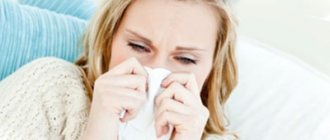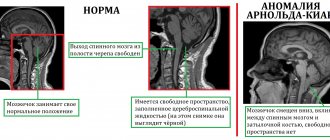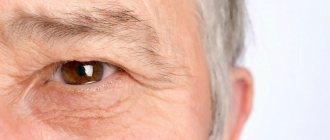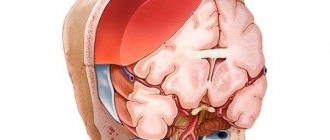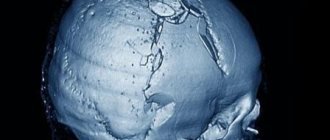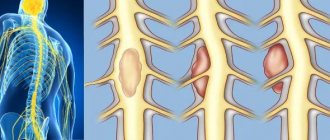Causes of nervous dermatitis
The exact cause of this disease is unknown. It is believed that this is a special condition of the nervous system in which the nerve endings are on high alert and tell the brain that the skin is itching, although in fact there is no irritant causing itching.
Provoking factors
It is unclear what exactly initiates the inflammation process, but it has been noted that certain exposures can cause an exacerbation of neurodermatitis. Here is a list of triggers that, according to reviews, most often provoke the disease.
- Stress and negative emotions;
- Nerve damage;
- Insect bites;
- Harsh soaps and detergents;
- Some types of fabrics that are tough, scratchy or scratchy, such as wool;
- Perfumes, skin care products, cosmetics;
- Pollen and mold;
- Wool, dander, dried saliva of pets;
- Tobacco smoke;
- Dry and frosty winter air, low air humidity;
- Hot shower or bath, too long washing;
- Dry skin;
- Sweating;
- Dust or sand;
- Certain foods (most commonly eggs, dairy, wheat, soy, and nuts).
Risk factors
- Female. Women are more prone to nervous dermatitis than men.
- Young age. Neurodermatitis usually affects people under fifty years of age.
- Other skin diseases. Patients suffering from atopic dermatitis, eczema or psoriasis are more likely to develop nervous dermatitis.
- Anxiety disorder, obsessive-compulsive disorder, as well as other conditions accompanied by nervous tension are a powerful provoking factor for itching in neurodermatitis.
Symptoms of nervous dermatitis
- Itching. With neurodermatitis, an itchy area appears on the skin. Unlike psoriasis or eczema, this disease has only one or two affected areas. Very rarely, neurodermatitis spreads and multiple lesions develop. The patient often scratches or rubs the affected area. No objective reason for the itching is identified. Itching intensifies during rest and at night, and stress provokes exacerbations.
- Pain. Some patients report pain. When the disease affects the scalp, it is accompanied by pain or a combination of pain and itching.
- An area of skin with raised edges is rough and dense to the touch, red or purple in color, which appears if the patient continues to scratch.
- With repeated scratching and chronic progression, the area of the pathological process thickens, the surface looks leathery, brownish, and with pronounced thickening it has a grayish tint.
- Hair loss is possible, especially noticeable if the affected area is on the scalp.
- When scratching, the epithelium is damaged, and open wounds and ulcers are formed that bleed. This may lead to infection.
- With a long course and frequent damage, scars form.
- If the integrity of the epidermis is compromised, a bacterial infection occurs. Swelling and pain occur, redness intensifies, and discharge appears, which dries out in the form of yellow crusts.
Nervous dermatitis in children
Nervous dermatitis in most cases starts in childhood, its symptoms are similar to the disease in adults, and it differs in its characteristic location on the face, neck and elbow bends (see photo). Prolonged contact with allergens and the lack of treatment for atopic dermatitis lead to the baby constantly scratching areas of the skin. This pushes the allergic reaction into the background, making itching the main symptom. The difficulty is that it is impossible to explain to young children that they should not scratch the affected areas. If atopy goes away on its own with age in many people, then a disease that has reached the stage of neurodermatitis is much more difficult to interrupt, especially considering that many glucocorticoid drugs are prohibited for use in children. It is important to consult a doctor in time for treatment.
Rash due to infections
An infectious rash can occur in adults and children when infected with a certain virus. Some cover the entire body, others are placed locally:
- Rubella - the first pimples appear in the neck and on the skin of the face, after a few hours the rash spreads to the body. The rashes are small. Oval and rounded redness does not exceed a diameter of 10 mm.
- Measles - rashes become visible on days 2-7. They are located first on the nose and in the area behind the ears, within a day the entire upper half of the body is affected, and by the 3rd day the whole body is covered with a rash. It tends to merge, red, then its color changes closer to the color of age spots.
- Chickenpox - it all starts with pinkish spots, which then become covered with itchy blisters with liquid inside.
- Shingles is a group of blisters up to 5 mm in size, their characteristic feature is localization on one side of the body (appears in people infected with the chickenpox virus). When they resolve, scars appear in the form of depressions or age spots. Accompanied by severe itching, pain spreading widely around the rash, and tingling.
- Scarlet fever - a rash appears within a day on the back, in the groin, in the folds (the face remains clean). In some cases, the inflamed skin turns blue.
- Herpes - round blisters with liquid on the lips or skin. After them, crusts remain - yellow or dark.
- Syphilis - a rash appears with secondary syphilis, the first time it is profuse, red, symmetrical, in subsequent cases it is unsaturated. Mainly located on the chest, shoulders, between the buttocks, and in the groin area.
- Skin candidiasis - blisters appear, burst, leaving merging erosions (the disease affects the folds of the body where friction is observed). Cracks with whitish contents form on them.
- Scabies - papules, vesicles, blisters appear, scabies tracts are visible to the naked eye.
- Ostiofolliculitis - manifests itself as rashes in the form of pustules with pus inside and a pink border. Based on the folds, on the face, on the head in the hair. After the pustules resolve, crusts form, and when they fall off, pigment spots form.
This is not a complete list of diseases accompanied by skin manifestations. Often the rash has a non-specific appearance, and it is impossible to independently determine how to treat it and what disease it is a consequence of. Treatment of infectious, non-infectious, and allergic rashes should be carried out by a specialist based on test results.
Types of nerve rash
Nervous allergy is a hypersensitive reaction in the absence of the allergen itself. The inflammatory reaction develops due to irritation of nerve endings - sensitive receptors. At the same time, the same substances as in allergies are released into the surrounding tissues and cause similar changes: itching, swelling, rash and redness. This process is involved in the formation of symptoms of skin diseases (eczema and psoriasis), as well as asthma, migraines, and vasomotor rhinitis.
Urticaria is a disease in which there is redness of the skin, itching and a characteristic rash in the form of irregularly shaped tubercles that can merge with each other. Such changes are provoked by contact with an allergen, exposure to cold, sun, pressure on the skin, as well as emotional stress. Nervous urticaria is quite rare and usually goes away once the stressor is removed. Treatment uses sedatives, as well as drugs that affect the functioning of the autonomic nervous system.
Nervous scabies, or neurogenic itch, is a condition that forms in the brain, while the skin is not affected by the disease. Itching can originate from the brain, or from peripheral nerves and receptors. Central neurogenic includes, for example, a feeling of itching in the amputated limb. The nerves may be pinched by a tight muscle or misaligned bone, causing itching. With shingles, there may also be itching in the area of the affected nerve. In the treatment of nervous scabies, glucocorticoids and antihistamines are ineffective. In case of nerve damage, local anesthetics and capsaicin (a red pepper alkaloid that affects pain receptors) help. If the cause is in the brain, medications are prescribed that act on the pain processing centers in the central nervous system. These are pregabalin and gabapentin.
What does the rash look like (types of rash)
The most common skin rashes are formed by the following elements:
- stains
_ A spot is a reddened area that does not protrude above the level of the surrounding skin. Redness is associated with excess blood flow. When you press on it with your finger, the stain disappears, and after the pressure stops it appears again; - nodules
(papules) are compacted areas that protrude slightly above the skin level. Most often, papules are round or conical in shape. Papules can merge with each other, forming plaques, sometimes quite large in area (for example, the size of a palm). When pressed, the papule also loses its color; - bubbles
(vesicles). A vesicle is an element, usually round in shape, rising above the level of the skin and representing a cavity filled with a clear, cloudy or bloody liquid; - pustules
(pustules). A pustule is a vesicle with purulent contents. The skin at the base of the pustule may also become inflamed; - blisters
are hollow elements of a round or oval shape, slightly rising above the skin level, resulting from limited and acute swelling.
The above elements are called primary
, since they occur on clean skin.
During the course of the disease, secondary elements
:
- areas of hyperpigmentation
or
depigmentation
(skin loses its natural color, becoming either darker or discolored); - peeling
(scales are formed - particles of the dying top layer of skin); - erosion
(superficial damage to the skin resulting from the opening of a vesicle and abscess). In severe cases, ulcers may occur - a violation of the integrity of the skin, involving all layers of the skin - up to the subcutaneous fatty tissue; - when scratching - abrasions
, both superficial and deep; - crust
(formed as a result of drying of sections of a weeping surface - for example, at the site of burst blisters, pustules, as well as ulcers and erosions); - areas of lichenification
(thickening of the skin with an increase in its pattern), etc.
Treatment of nervous dermatitis
Nervous dermatitis does not go away on its own; without medical help, external skin changes (see photo) and symptoms intensify, so it is very important to start treating this condition in adults and especially children on time. In addition to drug therapy, it is important to follow good skin care rules and adhere to a certain lifestyle; without this, medications will not be of sufficient benefit.
- You need to stop scratching and rubbing your skin. The itching can be intense, but to control symptoms and prevent flare-ups, it is important to refrain from scratching.
- A cool, damp compress will soothe the skin and reduce itching. In addition, using such a compress before applying a medicinal cream helps the medicine penetrate deeper into the dermis.
- To protect the affected areas from scratching, you can cover them with a bandage. This is especially useful if the patient tends to itch at night, during sleep, and therefore cannot control it.
- Nail care is also very important. In order to cause as little damage as possible when unknowingly scratching or at night, nails should be trimmed short and polished with a nail file.
- Take a warm bath to hydrate your skin. The water should be close to body temperature, in no case hot, and the procedure should last no longer than ten minutes. You can add oat decoction to the bath. It is better not to use soap and shower gel, especially those with dyes and fragrances. Afterwards, gently pat your skin with a towel and immediately apply a hypoallergenic moisturizer.
- Avoid triggers. Pay attention to what usually triggers a flare-up and try to avoid it. For example, use special techniques to cope with stress, do not wear irritating clothes.
Treatment with medications
Only a doctor can diagnose nervous dermatitis and select drug treatment. Therapy has several directions.
| Fight itching |
|
| Softening thickened skin | Salicylic ointment has a keratolytic effect and reduces the thickness of the affected area. |
| Treatment of infection | Antibiotics topically in the form of ointments, or orally in the form of tablets, help fight infection |
| Wound healing | Scratching leads to the appearance of wounds, which are treated in the following ways:
|
| Stress therapy | Stress and anxiety are the main triggers of neurodermatitis, so for treatment to be effective, nervous tension must be eliminated.
|
Allergic rash
The skin manifestation of some allergic reactions is dermatitis. It is observed in adults and children. It occurs due to the work of immune cells that try to remove a foreign object from the body. During this reaction, the blood vessels dilate, a considerable amount of histamine is released, the skin becomes inflamed, it swells and begins to itch.
Allergic manifestations are observed when the allergen directly affects the skin, digestive system, and respiratory tract. List of the most common allergens:
- pet hair;
- pollen of plants blooming in spring and autumn;
- pharmaceutical preparations;
- products (milk, citrus fruits, nuts, chocolate and hundreds of other items);
- nutritional supplements;
- cosmetics (decorative and skin care);
- metals;
- smoke from a fire;
- fabrics.
Typically, contact dermatitis occurs at the site of contact with an allergen. If it is clothing, then it will appear in the places where it touched and rubbed most tightly, if it is cosmetics - in the places where it was applied. Allergic dermatitis may be accompanied by additional symptoms - lacrimation, runny nose, headache, etc. In case of serious reactions – rapid heartbeat, convulsions, nausea.
